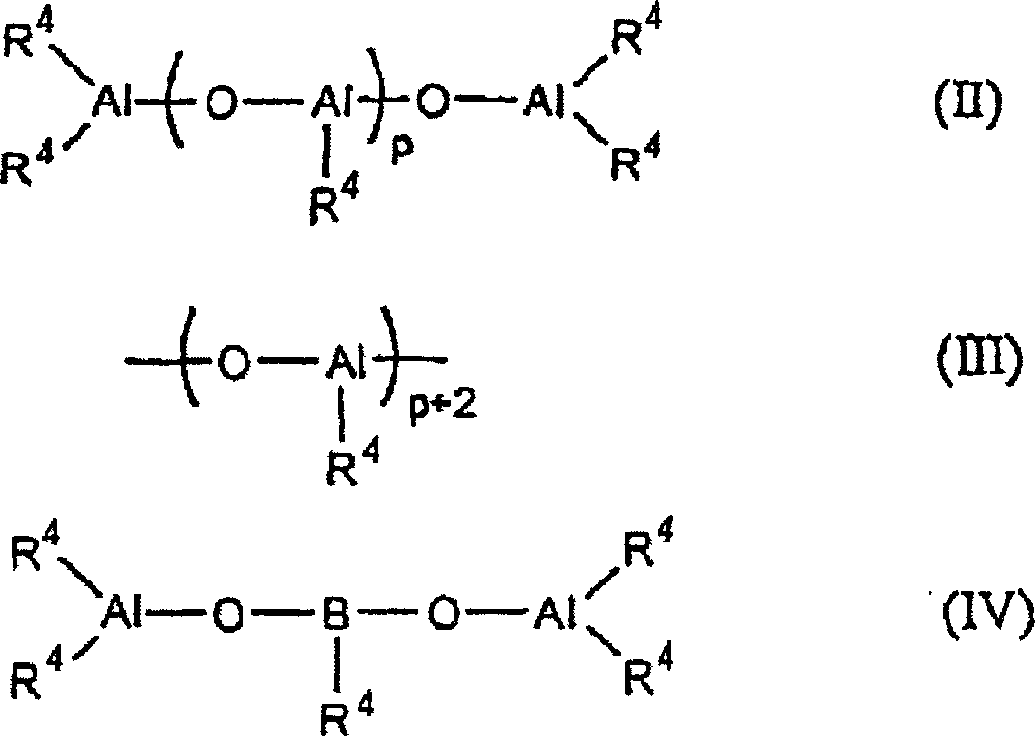Polypropylene type aqueous dispersion, polypropylene type composite aqueous emulsion composition and its use
A water-based dispersion and polypropylene-based technology, applied in coatings, adhesives, etc., can solve problems such as lack of dispersion stability, large particle size of dispersed particles, and decreased adhesion of coating film smoothness to polyolefin substrates.
- Summary
- Abstract
- Description
- Claims
- Application Information
AI Technical Summary
Problems solved by technology
Method used
Image
Examples
Embodiment 1
[0273] 1. Synthesis of Polypropylene
manufacture example 1
[0275] (1) Synthesis of dichloro[dimethylsilylene (cyclopentadienyl) (2,4-dimethyl-4H-1-azulene)] hafnium
[0276] (1) Synthesis of -1 ligand
[0277] 2-Methylazulene (4.01g) was dissolved in tetrahydrofuran (56ml), and after cooling to 0°C with an ice bath, 24.8ml of methyllithium ether solution (1.14mol / l) was added dropwise at the same temperature. After the dropwise addition, the ice bath was removed and the mixture was stirred for 2 hours. This solution was slowly added dropwise to a tetrahydrofuran solution (140 ml) of dimethylsilyl dichloride (34.0 ml, 0.280 mol) cooled to 0° C. with an ice bath. After the dropwise addition, the ice bath was removed and the mixture was stirred for 3 hours, and then the solvent and unreacted dimethylsilyl dichloride were distilled off under reduced pressure. Tetrahydrofuran (80ml) was added and cooled to 0°C, and sodium cyclopentadienate (2.1mol / l, 26.9ml, 56.5mmol) was slowly added dropwise. After the addition was complete, the ...
Embodiment 2
[0305] In a glass flask equipped with a thermometer, a condenser, a stirrer, and a dropping funnel, add 300 g of polypropylene, 100 g of maleic anhydride, and 900 g of chlorobenzene synthesized by the above [Manufacturing Example 1], and make the system The temperature was raised to 130°C for dissolution. Next, a solution in which 25 g of dicumyl peroxide was dissolved in 300 g of chlorobenzene was dropped over 5 hours at the same temperature, and an aging reaction was performed for 3 hours. After the reaction was completed, it was cooled to around room temperature, the reaction solution was added to 4.5 kg of acetone, and the precipitated maleic anhydride-modified polypropylene was filtered. The modified resin was added to 4.5 kg of acetone again for purification, and then filtered and vacuum-dried. An infrared absorption spectrum test was performed on the obtained white powdery modified resin, and the result was that the maleic anhydride group content was 4.1% by weight. ...
PUM
| Property | Measurement | Unit |
|---|---|---|
| particle size | aaaaa | aaaaa |
| particle diameter | aaaaa | aaaaa |
| specific surface area | aaaaa | aaaaa |
Abstract
Description
Claims
Application Information
 Login to View More
Login to View More - R&D
- Intellectual Property
- Life Sciences
- Materials
- Tech Scout
- Unparalleled Data Quality
- Higher Quality Content
- 60% Fewer Hallucinations
Browse by: Latest US Patents, China's latest patents, Technical Efficacy Thesaurus, Application Domain, Technology Topic, Popular Technical Reports.
© 2025 PatSnap. All rights reserved.Legal|Privacy policy|Modern Slavery Act Transparency Statement|Sitemap|About US| Contact US: help@patsnap.com

